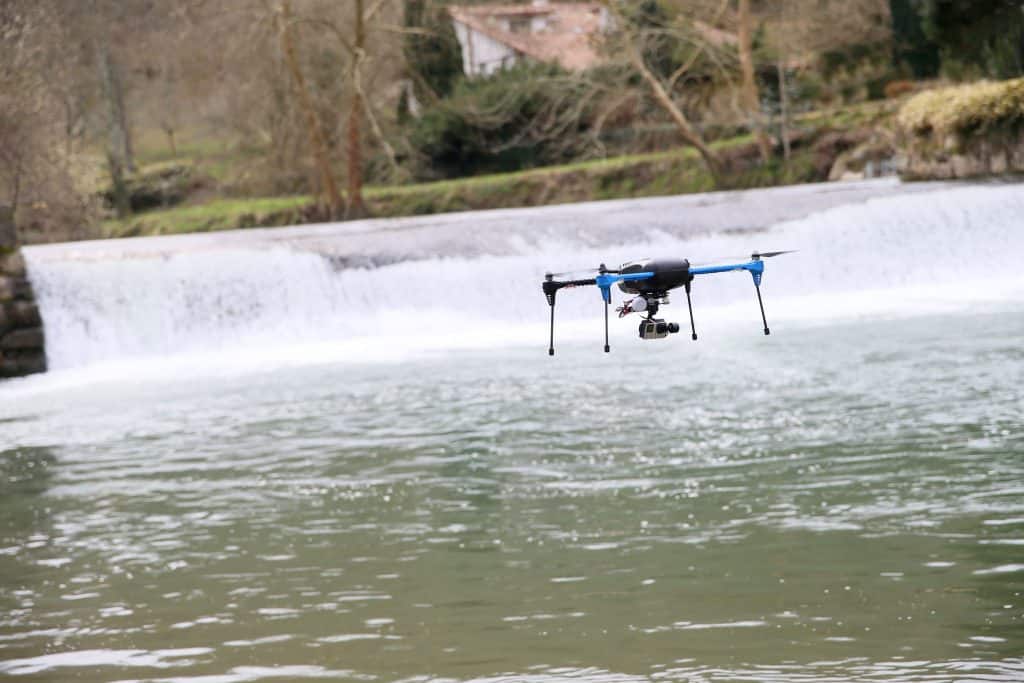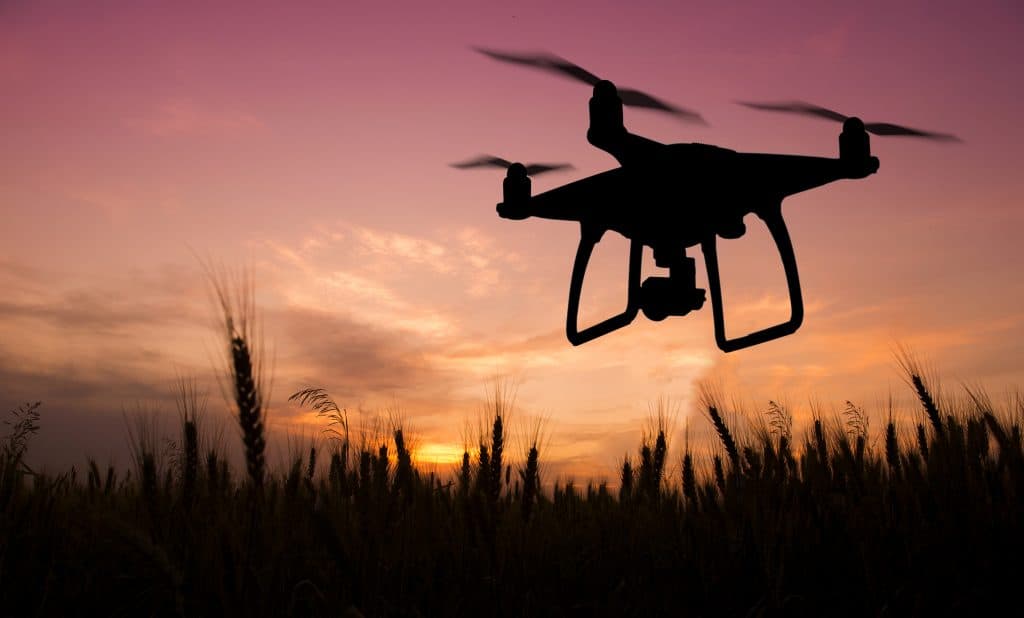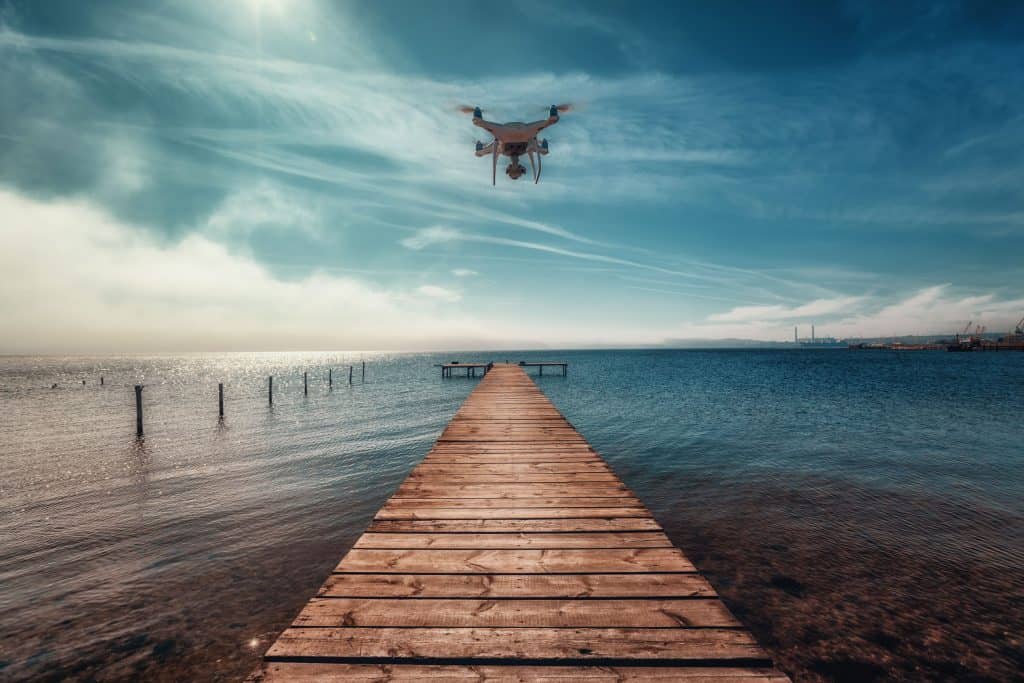
With new advances in technology, fishermen are beginning to implement new tactics into their fishing trips. One of these new tactics is drone fishing; however, in many places such as Texas, there is the question of whether or not drone fishing is legal.
It is illegal to use a drone to be used to assist in the acts of catching or finding fish in Texas state waters.
Drones and other Unmanned Aircraft Vehicles have their own set of laws and regulations for each state and activity. Continue reading below to learn more about drone fishing and the laws that all drones must follow.
What is Drone Fishing?
Drone fishing is described as using an unmanned aircraft vehicle or system to deliver a line or bait to the fish.
To do so, fishermen attach a special rig to their drones that connects back to the fishing rod on the shore.
Why do people use a drone on their fishing trips? Well, fishing with a drone can be very similar to fishing with the use of a kite.
A drone can assist you in getting your fishing line well beyond the distance that of a normal cast.
Drones are used to deliver the line further than a cast could.
This comes in handy when trying to reach the fish that may be fishing just beyond your cast’s reach.
Drone fishing also comes in handy when fishing off a coast, the drone has the ability to take your line past the surf to the areas where larger fish are more likely to be feeding.
Besides delivering the line at a greater distance than that of a cast, a drone can be useful in capturing the fight between you and the fish on camera.
You can then review the video later and see what went right or wrong during the battle and even have a fun video to share with your friends!
Texas Drone Laws

While the Federal Government has issued a general set of drone laws, some states such as Texas and even some towns have taken the liberty to implement more specific and restricting laws.
Besides the Federal Government’s drone restrictions, states and towns have implemented their own rules regarding the use of drones.
There are different sets of rules and documents you must have depending on the reason you are using your drone for. The three uses outlined by the Federal Government are commercial use, recreational use, and governmental use.
Some drone laws and restrictions apply only to specific uses.
If you are using your drone for commercial or governmental use, you are required to follow the rules outlined in the Federal Aviation Administrations Part 107 Small Unmanned Aircraft System Rule.
This includes receiving certification as a Remote Pilot. You can receive this certification by passing the Federal Aviation Aeronautical Knowledge Test.
However, if you are fishing for governmental use, you can obtain a Federal Certificate of Authorization rather than following the Part 107 Small UAS Rule.
If you are flying your drone for recreational (fun) use, then you simply need to register your drone with the Federal Aviation Administration or local government and follow the Federal Aviation Administration’s Special Rules for Model Aircraft.
Drones can not fly above 400 feet altitude or below any restricted airspace. Be aware of where there is restricted airspace near you.
Drones are not permitted to fly above 400 feet.
The Federal Aviation Administration further issues some restraints on the specifications of each drone. As a general guideline your drone MUST fit within the following restrictions:
- If between 0.55 lbs and 55 lbs the UAS must register with the FAA
- A drone may not exceed 55 lbs
- While in operation the drone must remain within your line-of-sight
- Drones cannot be flown over people
- Flying above 400 feet is restricted
- A drone may not exceed 100 mph
Once you have verified that you have the proper documentation and are following the correct set of rules for your drone use, you can obtain one of Texas drone use permits.
There are two different types of permits you can obtain from the Texas Parks and Wildlife Department. These two permits you can acquire are an Aerial Management Permit and a Land Owner Authorization permit.
However, these permits are for the management for transport and transplant of animals. The use of a drone for recreational or sports hunting (includes fishing) is not lawful.
Recreational or Sport hunting/fishing with the use of a drone is not lawful in Texas.
The following laws apply to the use of drones within Texas state lines and limit how, where, and when a drone may be used.
For drones with cameras, pilots are reminded that photos or videos may only be taken on private property with the consent of the owner and the people on the property.
If you are in violation of this regulation, the Texas State Government has set up rules to protect citizens from unwanted surveillance from drones.
Fines for violating someone’s privacy by capturing or sharing images without their consent can range from $5,000 to $10,000.
Fines can range up to $10,000 dollars for the capturing of images without the consent of those pictured.
Texas is one of the only states to restrict drones from being used solely for the purpose of taking and capturing photos or videos. This is meant to protect the privacy of other citizens and their private property.
Photos for research, whether it be professional or academic, are acceptable under a law implemented by the Texas state legislature in 2015.
The state of Texas has declared certain areas or buildings as critical infrastructure. Drones are not permitted to fly over or near an area that has been listed as critical infrastructure.
As well as avoiding any critical infrastructure, drones are not permitted to be flown within a 5-mile radius of ANY airport.
Many states have created a set of rules limiting the use of drones by law enforcement officials.
For example, law enforcement is only allowed to use a surveillance drone in very specific instances in specific ways. Surveillance by law enforcement with a drone is prohibited.
Drone Fishing and the International Game Fish Association

According to the International Game Fish Association, the use of drone fishing is not an unethical practice.
The International Game Fish Association was created in 1940 in order to establish a code of conduct for fishing. Their hope was to spread this code of conduct and regulations worldwide.
The International Game Fish Association now evaluates each new technique used to capture a fish and decides whether or not its use is ethical (states still have the final call whether it is legally accepted or not).
The International Game Fish Association is responsible for deeming whether or not a fishing technique is ethical.
A technique is deemed unethical if it gives the fisherman an unfair advantage in finding, hooking, and capturing the fish.
After reviewing drone fishing techniques, the International Game Fish Association declared that the use of a drone in fishing was not unethical. They then went on to establish a list of guidelines in how a drone may be used while fishing.
Drone fishing was not deemed unethical by the International Game Fish Association.
As described by the International Game Fish Association, a drone may be used in the deliverance of the bait or line to the fish. However, the drone is not to be used to aid the fisherman in pulling the fish to shore.
The moment the line is hooked on a fish it is to detach from the drone, leaving the battle to between the fish and fisherman alone.
In order to release the line before hooking a fish, a fisherman can use either a snap release, outrigger/downrigger, or even a coat hanger.
Drones can NOT be used to aid the fisherman in pulling, dragging, or chasing a fish to shore.
Whatever method they use, the line must either be dropped before the fish strikes or the very moment a fish strikes the line.
Always be aware of the rules and regulations that apply to the use of drones in the area you are in.
Be cautious of buildings, power lines, people and anything else near where you are fishing or flying your drone. Some beaches or bodies of water may have restrictions of where and when drones can be flown.
Being safe and following the established rules and regulations should always be of the utmost concern no matter where you are.
The Best Drones for Fishing

Drones can come at a hefty price, especially if the drone you are thinking of purchasing is specifically designed for the task of fishing. However, since these drones are designed to be more effective during your fishing trip, it may be well worth the price.
Some drones are designed specifically for fishing.
In order to help you find and choose the perfect drone for your next fishing trip here is a list of my top 5 drone picks.
Splash Drone 3 Fisherman
This is definitely one of the most expensive drones on the market being listed at $1,700.00.
The Splash Drone 3 Fisherman is designed specifically for fisherman and comes with many beneficial specifications to aid in a fishing trip.
The Splash Drone 3 is waterproof and comes equipped with a payload release mechanism to aid in releasing the line or bait while out on the water.
The only complaints about the Splash Drone 3 are that the camera quality is rather poor and the lack of gimbal can be a bit of a hassle. However, with easy to use flying controls the Splash Drone 3 is sure to help you reel in that big catch.
DJI Phantom 4 Pro
While the DJI Phantom 4 Pro is not specifically designed for fishing, it can be easily modified for your fishing trip by attaching snap releases for the line.
The excellent camera quality on this drone is sure to help you record your catch in a flawless video. The flying controls are designed specifically to be easy to use.
The DJI Phantom 4 Pro is one of the less expensive drones you can purchase for your fishing trip while still maintaining many of the benefits of an expensive drone. The DJI Phantom 4 Pro is only $975.00.
DJI Phantom 3 Standard
Similar to the DJI Phantom 4 Pro, the DJI Phantom 3 Standard comes with easy to fly controls and an excellent camera for filming your next catch.
The DJI is made to handle wind better than most drones and comes at an amazing value for the quality of the drone. The DJI Phantom 3 Standard is listed at $522.00.
The negatives to the DJI Phantom 3 is that it is a little larger and can make it harder to transport. For protection, you will need to get a custom backpack or carrying case.
As well as being hard to transport the DJI Phantom 3 is not equipped with as many intelligent flight modes as other newer drones are.
Even considering the negatives to this drone it is still one of the best drones you can purchase for fishing due to its lower price and higher quality.
Yuneec Typhoon H
One of the greatest benefits of the Yuneec Typhoon H is that it is equipped with a 360-degree camera.
With the Yuneec Typhoon H you will be able to record your fight with the fish from all directions.
Another perk with this drone is that the landing gear can retract during flight. The Yuneec was definitely designed to be sleek and to fly in style.
The only downsides of this drone are that the transmitter is much larger than that of other drones. The size can make it more difficult to transport.
While cheaper than the Splash Drone 3, the Yuneec is still one of the more expensive drones being listed at $1,4500.00
3DR Solo
The 3DR Solo is one of the cheapest drones on the market that still operates with easy to use controls. The 3DR Solo on its own is priced around $400.00.
The major downside of the 3DR is that it does not come equipped with a camera. You can attach your own action camera such as a go pro or you can purchase the 3DR in combination with a go pro and a carrying backpack for a higher price ($790.00).
If you are looking only for a small and cheap drone to help you begin learning how to drone fish, then the 3DR Solo is a great way to start!
Related Questions:
Can you shoot a drone over your property in Texas? While it is not lawful for a drone to be capturing any images of private property or persons without their consent, it is also not lawful to shoot a drone down. If you have an unwanted hovering drone call in your local law enforcement before taking matters into your own hands.
Do I need a license to fly my drown? You are only responsible for having a drone license if you are flying the drone for commercial or governmental purposes. If you are solely using your drone for recreational purposes you are not required to possess a remote pilot certificate.
Do I own the airspace above my house? Your airspace may end anywhere from the top of all buildings to 500 feet off the ground. However, since there is no official rule on the subject, one can not say for sure how much of your property’s airspace you own.
